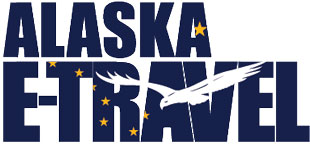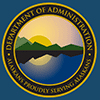
Travel
E-Travel News
January 2018 - Volume 10, Issue 1
In This Issue
Airline No-Show Policy
Air travel is at an all-time high with over 900 million domestic travelers annually. On average about 10% of travelers simply do not show up for their flight.
No-shows affect airline departures and seat availability, which both in turn affect the carrier and travelers. In the effort to reduce the number of no-shows, several of the major air carriers imposed policies that incur penalties for travelers that do not cancel flights prior to departure.
Most recently, Alaska Airlines updated their no-show policy to follow the industry standard. Effective January 1, 2018, travelers that do not showing up for their outbound flight will be considered a no-show and all their connecting flights associated with the one, even a return flight, will be cancelled. In addition to itinerary cancellation, the value of the ticket is forfeited. Alaska Airlines no-show policy applies to all travelers, not just state funded travelers.
This policy change may leave an unknowing traveler stranded. For example, if a traveler holds a roundtrip ticket between Juneau to Kenai and they decide to ride with a friend from Anchorage to Kenai, and do not change their itinerary, they will no longer have a return from Kenai back to Juneau. A new reservation will need to be booked and ticketed because the original flights were cancelled and the value was lost.
To avoid delays and additional costs to the department, travelers must contact CTM (or the airlines if it is a last minute change) to cancel or change their itinerary. Contact information is printed on the bottom of every CTM itinerary.
Cancellations can be done in E-Travel Online if there is sufficient time for the request to process. If your plans change outside of normal business hours, it is recommended that you contact CTM directly to cancel the trip.
Travel processed by Shared Services can be cancelled via CTM, but the Final TA Request & Trip Closure Checklist must be submitted to Shared Services.
2018 State Preferred Hotels
CTM is about ready to kick off the 2018 State Preferred Hotel program. They are currently working with properties to ensure rates are loaded by January 1. The link to the list of preferred properties is posted in E-Travel Online.
This year there are more 5-star properties to choose from; two in Anchorage, two in Juneau, two in Bethel, one in Haines and one in Sitka. There are over 50 properties participating. All rates are subject to availability and must be booked via CTM.
The use of the State Preferred properties is not mandatory but in order to keep a viable program it is strongly encouraged.
Properties are listed as preferred if they offer greater value for every dollar spent, through competitive pricing and by offering additional amenities, such as free parking, shuttles, and breakfast. Properties also agree to waive taxes (in-state) and accept the CTS SmartPay authorization.
The State Preferred properties are reflected in E-Travel by star rating followed by all other properties listed by price.
- Star 5: single annual rate at or below the low season GSA rate.
- Star 4: two rates at or below the seasonal GSA rate.
There will be times when a property may offer a lower rate. That rate can be selected provided there are no traveler or advance purchase restrictions.
Advance Purchase Reporting
The AAM 60.050 Travel Purchase Policy follows Alaska Statute 39.20.140(b), which requires that the state pay no more than "the lowest ticket class fare for the most direct route".
While there is no requirement to purchase in advance, departments approval process should consider the advance purchase for the majority of travel requests. Various situations that do not lend themselves well to advance purchase of airfares are listed in the article; AAM 60.050 Travel Purchase Policy.
Department Travel Coordinators receive an Advance Booking report for air purchases monthly.
The detailed report includes the traveler, the itinerary information, and the number of days the ticket was purchased in advance. The report also includes a summary of the detail, similar to the example below.
Departments can use the report to drill down on individual habits and identify seasonal trends that may increase the average cost per trip.
Improving internal processes by encouraging travel requests and approvals to be completed in advance will help provide a cost savings to the department.
